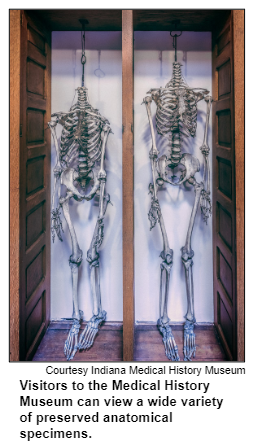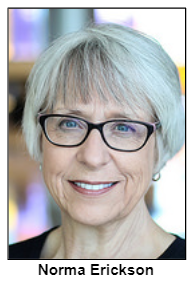Jun 7, 2019
(June 1, 2019) During the 1890s on the Indianapolis campus of what was then called Central State Hospital for the Insane, brain research was undertaken in the brick building that came to be known as the Old Pathology Building.

In 1969, more than 20 years before the closing of Central State as a psychiatric hospital, the Old Pathology Building - with most of its original furnishings, specimens, equipment and records - became the Indiana Medical History Museum.
The museum's path forward has not been smooth; it has faced challenges ranging from what Indiana Landmarks calls its "out-of-the-way location" west of the White River at 3045 W. Vermont Street to deterioration of the 1890s structure, including roof and masonry problems. In 2015, the Medical History Museum was placed on Landmarks' annual 10 Most Endangered Sites list.
Now, as the museum described as a "hidden history gem" celebrates its 50th anniversary, major improvements have been initiated. In September, an Indiana Historical Bureaumarker commemorating the Old Pathology Building will be erected on the site.
As we explore the captivating history that has unfolded in the pathology building-turned-museum - where jars of human brain tissue and historic medical equipment are displayed - Nelson is joined in studio by:
Sarah Halter, the museum's executive director since 2014. She is a board member and past president of the Association of Indiana Museums.
- And Norma Erickson, a board member of the museum and a medical historian. She was a Hoosier History Live guest in 2018 for a show about the history of African-American health care in Indianapolis.
Next to the museum, the former campus of Central State has become the site of apartments, single-family houses and businesses - both in historic and newly constructed buildings. Along with other state mental health hospitals, Central State was closed in 1994.

During the 1920s and '30s, neurosyphilis was a major focus of the medical research undertaken in the building. Before the introduction of penicillin in the 1940s, untreated syphilis in the tertiary stage was correctly understood as a frequent cause of mental illness.
The Indiana Medical History Museum opened in 1969, three years before the two-story structure, considered to be the oldest surviving pathology building in the country, was added to the National Register of Historic Places.
Today, in addition to the exhibits and tours at the museum, its historic amphitheater is used for presentations open to the public on a range of medical history topics. Speakers have included Indianapolis-based medical historians Dr. William McNiece and Bill Beck, who were Hoosier History Live guests in 2014 on a show about epidemics throughout Indiana's history.